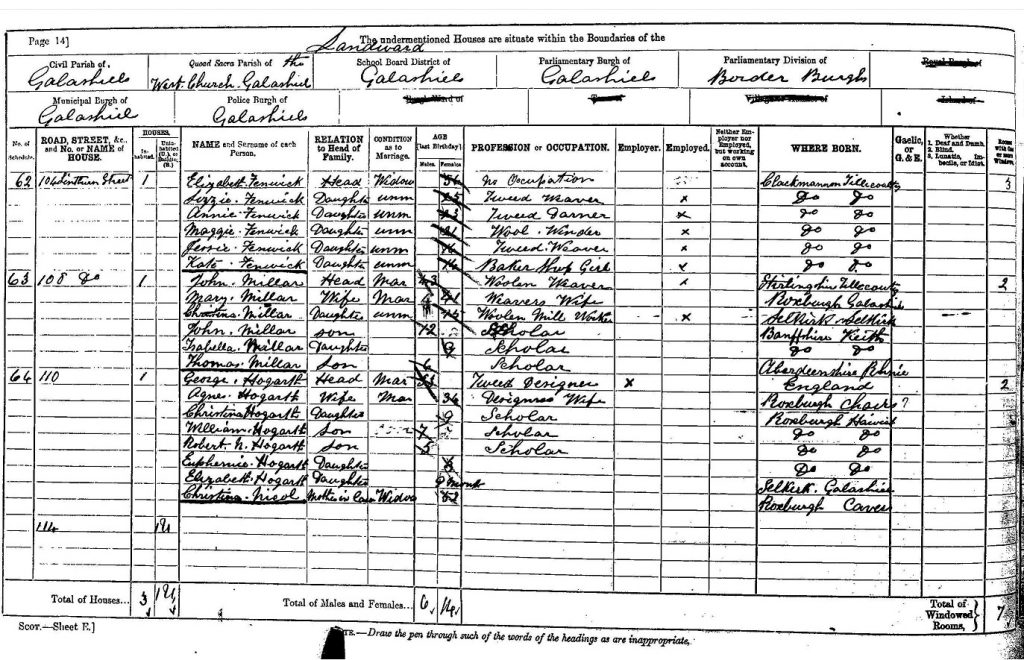Today we tend to think of mainly rural areas like the Scottish Borders as areas that have suffered from depopulation as people have moved out to find suitable employment. It’s not somewhere that you’d choose to find lots of skilled jobs and good prospects. However, one hundred and fifty years ago, things were very different. Galashiels and Hawick were the prime locations for what was termed as ‘Scotch tweed’ not just in Scotland but in the whole of Britain. As the major manufacturing centres in the country, the opportunities available in the scores of working woollen mills attracted skilled workers from all over the country.
If you take a look at any census for Galashiels and Hawick in the later part of the 19th century, what you’ll find is a significant number of residents were born in Clackmannanshire. The towns of Alva,Tillicoultry and Alloa there also had woollen mills and therefore a skilled workforce who were attracted to the Borders.

The image above is of a fairly typical page in the 1891 Census for Galashiels. Three families are listed on the page and They all have family members working in the tweed/woollen industry. The first family the Fenwicks were all born in Tillicoultry and the male head of the second household John Millar, a woollen weaver, was also born there. It’s likely that a large number of Hawick and Galashiels residents today do have at least some of their family roots in the Hillfoot towns of Clackmannanshire.
You can learn more about migration within the Scottish Textile industries of the past from the presentation that I am giving at the Scottish Indexes Conference on Saturday May 22nd.